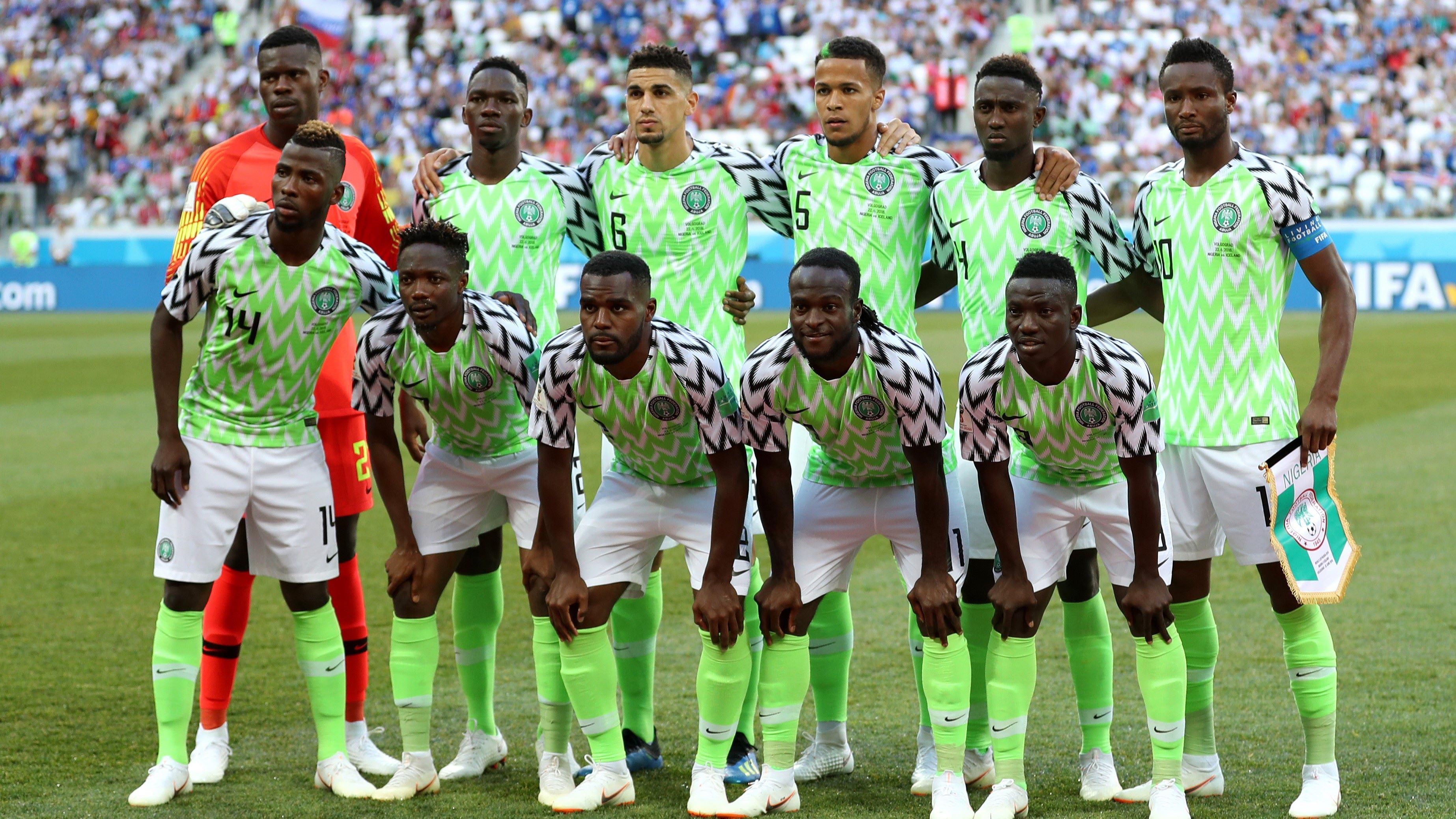The jersey phenomenon is very intriguing, especially in football. Fans all over the globe are going wild over kits without any pattern or rule. They, of course, primarily buy shirts of the club they support, but that’s not the end. Some fans like to own rare pieces few people have, some adore particular players – usually superstars – and purchase their jerseys, while some simply like a design of some shirt and decide they must have it.On the other hand, clothing brands and their designers are trying hard to create something innovative, but also nostalgic and traditional. Rarely do they manage to “hit the bullseye” and combine all three factors, but when they do, they start a jersey revolution.Kelechi Iheanacho wearing the celebrated jersey at the 2018 FIFA World Cup (©Catherine Ivill/Getty Images)Just like in the case of Nigeria’s kit for the 2018 FIFA World Cup.The Super Eagles jersey for the tournament held in Russia was made by Nike and designed by Matthew Wolff, who managed to create an utmost hit.”It was probably the first football shirt to have this drop moment that transcended football. It wasn’t just Nigeria fans or even just football shirt enthusiasts who wanted it – it was something where everybody who became aware of it wanted one and a secondary market for that shirt was almost instantly created.””It was the first football shirt that went straight over its RRP (recommended retail price) on launch. Prior to that, it was just sneakers doing that kind of thing,” said Doug Bierton, CEO of Classic Football Shirts, speaking to The Athletic.##EDITORS_CHOICE##Once the kit was released on June 1 2018, the “frenzy” began. Nike’s store in London was surrounded by enthusiasts who wanted that green and white “piece of cloth,” while as many as three million people pre-ordered it! Everyone was so enchanted by Nigeria’s jersey that shorts, hats, track jackets, and other Super Eagles gear were shortly sold out.At that point, it was as if the whole world was coloured green and white. As if everyone was Nigerian.Nevertheless, the creators had no idea the kit would become such a tremendous success and gain such popularity. The Athletic claims that the aforementioned Wolff and Nike’s senior design director at the time, Peter Hoppins, had only one thing in mind: pleasing the holy trinity of any national team – the players, fans, and Football Federation.When releasing the kit, Nike described it as “a tribute to Nigeria’s 1994 debut on the world stage.” And perhaps that was the key. The combination of modern and innovative design and the nostalgia all football fans feel might have brought the jersey such fame.Finidi George in the Super Eagles’ 1994 kit (©Shaun Botterill/Allsport/Getty Images)At the same time, this new shirt symbolized the new generation of Nigeria’s players – led by EPL stars like Alex Iwobi, Wilfred Ndidi, and Kelechi Iheanacho – who were supposed to write new pages of the Super Eagles’ history.Desmond “Dez” Ebohon, a sports marketer from Nigeria, admitted that the Super Eagles’ jerseys throughout the national team’s history were a bit “crazy,” but only the 2018 one reached the ultimate beauty and appreciation.”It feels the kit providers try their best for Nigeria to deliver a crazy kit. One that incorporates culture, the vibes, the colourfulness and joy that Nigerians bring to football, and we appreciate that,” Ebohon stated, talking to The Athletic.##NAJAVA_MECA_8982504##Moreover, this jersey directly affected the increase in football shirt demand in the late 2010s.Now, many will ask how such a result can be repeated. According to Bierton, there’s no recipe.”The way it’s going, maybe it is a bit overdone and every brand, every team trying to have a Nigeria moment is not sustainable. It has to be organic. I don’t think that type of shirt could win every year, but it did that year, in that moment,” he told The Athletic.Still, as the famous saying states, Clothes don’t make a man, and, in this case, A beautiful jersey doesn’t provide results.Ahmed Musa celebrates his opener against Iceland (©Kevin C. Cox/Getty Images)At the 2018 FIFA World Cup, Nigeria was in Group D alongside Argentina, Croatia, and Iceland. They lost the opening game to the Croats 2-0 but bounced back, beating Iceland by the same result behind Ahmed Musa’s brace.In the final round, they lost to Argentina 2-1, conceding a goal in the 86th minute. Marcos Rojo netted the late winner, launched Lionel Messi and Co. to the knockout phase, and sent the Super Eagles home. Had they salvaged a draw, they would have taken the South Americans’ spot in the Round of 16.Nevertheless, Nigeria may have lost on the pitch but noted a “fashion victory,” which is remembered to this day.

